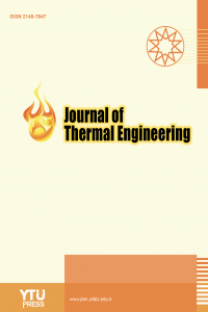Heat transfer performance of nanofluids in heat exchanger: a review
Heat transfer performance of nanofluids in heat exchanger: a review
Nanofluid, Thermo-Physical Properties Heat Exchangers, Heat Transfer Coefficient, Heat Transfer Rate,
- Yayın Aralığı: 6
- Başlangıç: 2015
- Yayıncı: YILDIZ TEKNİK ÜNİVERSİTESİ
Heat transfer performance of nanofluids in heat exchanger: a review
Rohinee BARAI, Devesh KUMAR, Atul WANKHADE
Thermodynamic sensitivity analysis of SOFC integrated with blade cooled gas turbine hybrid cycle
Tushar CHOUDHARY, Tikendra Nath VERMA, Mithilesh Kumar SAHU, Upendra RAJAK, Sanyaj SANYAJ
Control of noise and temperature using radial air injection inside engine silencer
Nilaj DESHMUKH, Abhijit WAGHMODE
Buoyancy force and magnetic field effects on laminar vortex breakdown and fluid layers
Brahim MAHFOUD, Mohammed MOUSSAOUI
Performance improvement of shell and tube heat exchanger by using Fe3O4/water nanofluid
Saad NAJIM, Adnan HUSSEIN, Suad Hassan DANOOK
Advancements and challenges in the fluidized bed gasification system: A comprehensive review
Surender ANTIL, Gulshan SACHDEVA, Avdhesh SHARMA
